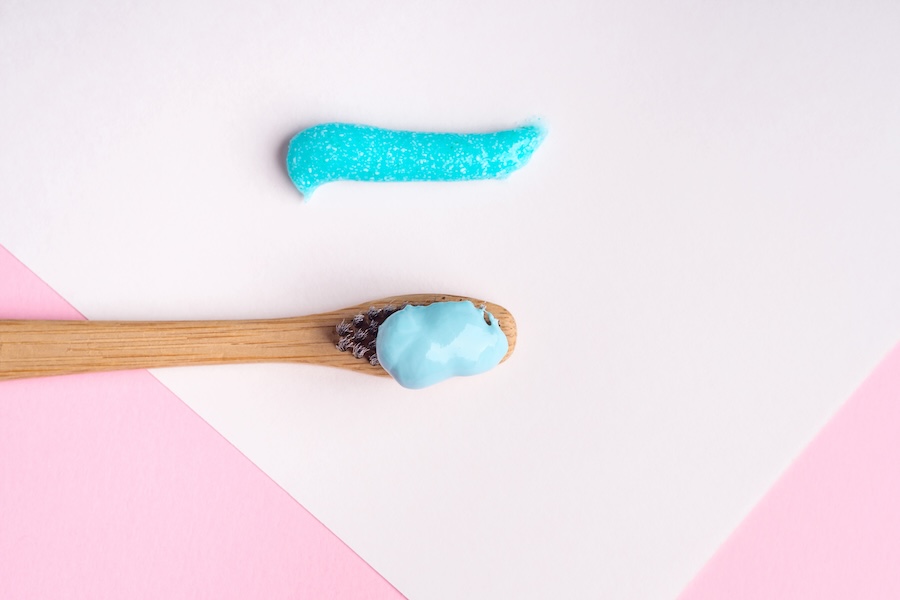Our toothbrushes are unsung heroes in our daily dental routine. They stand guard, fighting against plaque, bacteria, and the remnants of that chocolate cake we indulged in after dinner.
But like all warriors, they too wear out and need replacing. It’s vital to recognize the signs of a worn-out toothbrush, as using one beyond its prime can be less effective in cleaning and even harm oral health.
So, when should you replace your toothbrush?
Let’s uncover the top 5 signs.
Frayed Bristles
Over time, the bristles on your toothbrush can become frayed and spread out. Not only do worn-out bristles do a less effective job at cleaning between the crevices of your teeth, but they can also be abrasive on your gums. If the bristles are uneven or frayed, it’s time for a new toothbrush.
Change in Color
Many modern toothbrushes come with color indicators. These are bristles that fade over time. When the colored bristles fade to a certain extent, it indicates that you should replace your toothbrush.
Frayed Bristles
Over time, the bristles on your toothbrush can become frayed and spread out. Not only do worn-out bristles do a less effective job at cleaning between the crevices of your teeth, but they can also be abrasive on your gums. If the bristles are uneven or frayed, it’s time for a new toothbrush.
Bristles Lose Firmness
A few things to consider when choosing a toothbrush, and a new toothbrush have a certain level of firmness. If you notice the bristles becoming overly soft and they don’t return to their original position after use, it may be time for a change. Remember, while a soft toothbrush is recommended for most people, it shouldn’t be so limp that it fails to clean effectively.
Bacterial Build-Up
After bouts of sickness, bacteria can latch onto the bristles of your toothbrush. Replacing your toothbrush after a cold, the flu, a mouth infection, or a sore throat is advised. Even if you haven’t been sick, if you notice your toothbrush has an unusual smell or discoloration, it could be a sign of bacterial contamination.
It’s Been 3-4 Months
The American Dental Association (ADA) recommends replacing your toothbrush approximately every three to four months or sooner if the bristles are frayed. A good rule of thumb is to change your toothbrush with the change of every season. This ensures that you maintain optimum oral health even if you haven’t noticed visible wear and tear.
Splintered or Broken Handle
If your toothbrush’s handle shows signs of damage, such as cracks or splinters, it’s an immediate red flag. A damaged handle could lead to potential injuries and may not give you the proper grip required for effective brushing.
Loss of Bristle Texture: Toothbrush bristles often have a specific texture pattern to enhance cleaning. The brush’s effectiveness has diminished if this texture has faded or flattened out entirely.
Change in Bristle Color
A toothbrush stored in damp or unhygienic conditions can develop mold or mildew. If you notice the bristles changing color, especially in patches that look suspiciously like mold growth, discard the toothbrush immediately.
Storage Conditions
Your toothbrush storage plays a pivotal role in its longevity. Bacterial growth becomes a real concern if it’s stored in a closed, damp space where it can’t dry properly. Remember, a toothbrush needs a clean, dry environment. Consider replacing your brush more frequently if you’ve been storing it in unfavorable conditions.
It’s Been 3-4 Months
The American Dental Association (ADA) recommends replacing your toothbrush approximately every three to four months or sooner if the bristles are frayed. A good rule of thumb is to change your toothbrush with the change of every season. This ensures that even if you haven’t noticed visible wear and tear, you still maintain optimum oral health.
Bacterial Build-Up
After bouts of sickness, bacteria can latch onto the bristles of your toothbrush. Replacing your toothbrush after a cold, the flu, a mouth infection, or a sore throat is advised. Even if you haven’t been sick, if you notice your toothbrush has an unusual smell or discoloration, it could be a sign of bacterial contamination.
Bottomline
Being vigilant about “when to replace toothbrush” ensures your oral hygiene is up to the mark. A worn-out toothbrush can’t provide the same level of cleanliness as a new one. While it may seem minor, regularly updating your toothbrush can be a significant step towards a healthier smile.
Your toothbrush plays a pivotal role in maintaining a bright and healthy smile. And while ensuring its top-notch condition is crucial, it’s equally essential to have regular professional dental check-ups.
At The Port Dental in Calgary, we understand the importance of comprehensive dental care. Alongside offering advice like the above on maintaining your oral hygiene tools, we provide a range of dental services tailored to your unique needs.
Haven’t had a check-up in a while?
Or simply need expert advice on your dental routine? Let our experienced professionals at The Port Dental guide you.
Book your appointment today and take the next step towards a radiant, confident smile!



